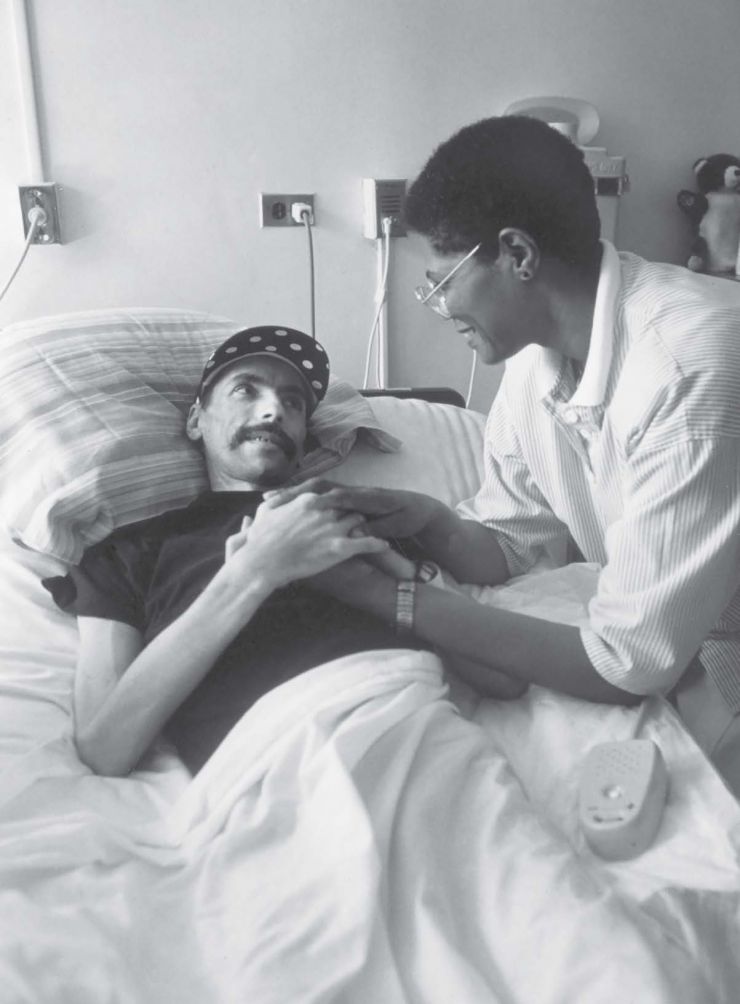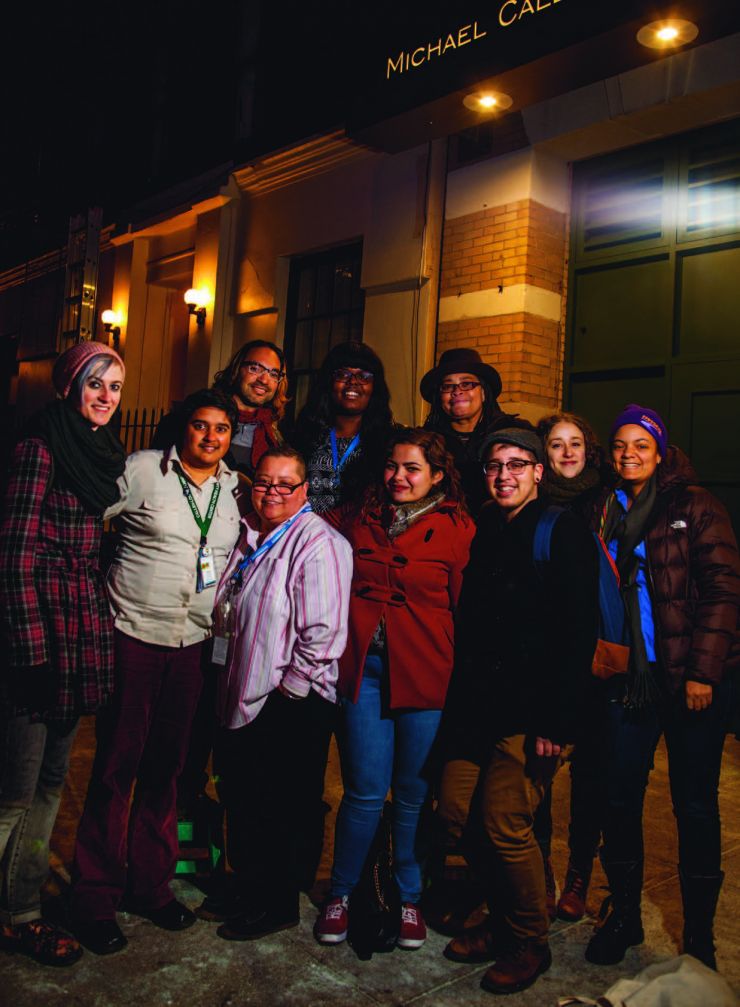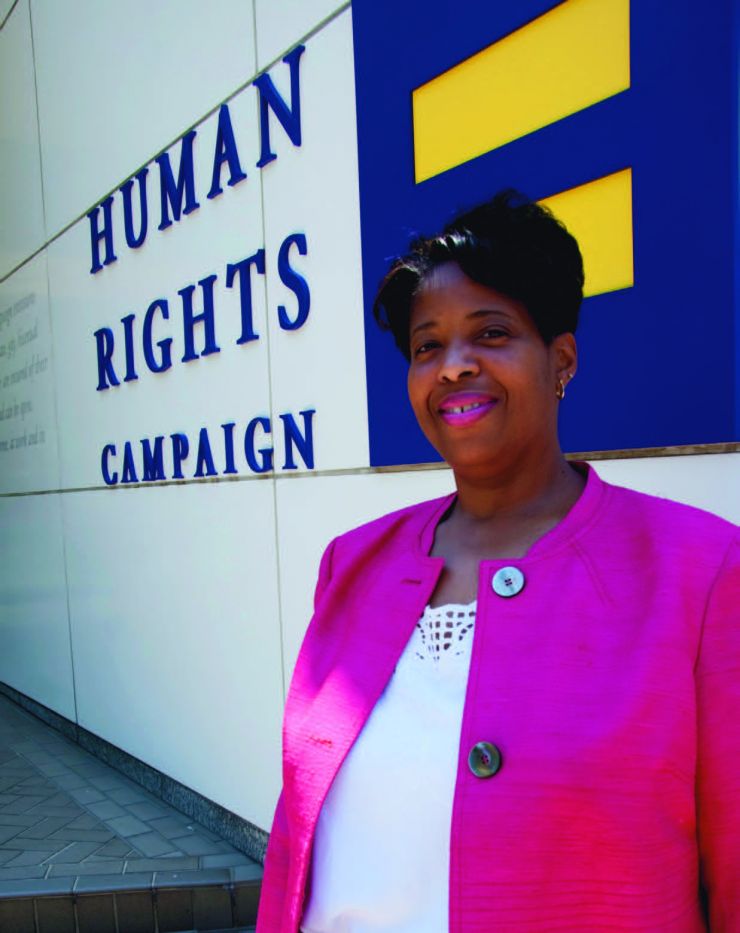LGBTQ+ Solidarity
June 14, 2024

That guiding principle, together with organization, unity and vision, helped to make the Union a labor and civil rights powerhouse.
Unfortunately, during 1199’s early years, the rights of some workers were not adequately addressed in society at large. Discrimination based on sexual orientation and gender identity continues to this day, but at that time it was commonplace.
The 1969 Stonewall Uprising is widely regarded as a turning point that challenged outdated attitudes. The Greenwich Village protest helped progressives to see multiple interlocking systems of oppression more clearly. During the 1970s, LGBTQ+ (lesbian, gay bisexual, trans, queer, plus other sexual identities) workers and their allies began to organize more openly throughout society. In the workplace, the fight centered on contract protections against discrimination based on sexual orientation.
The HIV/AIDS crisis of the 1980s and 1990s brought into even sharper relief the discrimination, marginalization and silencing of the queer population. The group ACT UP (AIDS Coalition to Unleash Power) dramatized the need for a healthcare system that would meet the needs of the most vulnerable.
A Feb. 23, 1988 New York Times article quoted Kathy Abelson, the then 1199 Executive Vice President of the RN division, on the need for adequate compensation to address the shortage of hospital nurses and technicians during the crisis. Just days before, hundreds of nurses at Lincoln Medical and Mental Health Center in the Bronx struck to protest poor working conditions which adversely affected the care of AIDS patients.
The journey of 1199er Val S. Dickerson is indicative of the work and commitment of members. Beginning in 1990, Dickerson was a volunteer at the Gay Men’s Health Crisis (GMHC), providing support and handling errands for AIDS patients. In 1991, he worked with AIDS patients at Manhattan’s Columbia Presbyterian Hospital. Many of the patients were estranged from family and friends. “The staff in the hospital was their family and support system,” Dickerson said. He continued his AIDS work in 1995 at Rivington House.
Throughout the crisis, many of the more than 2,000 social workers in the Union played a central role in helping patients and community residents access an array of health and wellness services.

Similar to 1199SEIU’s 1969 hospital campaign in Charleston, South Carolina, GMHC workers were unable to secure a first contract, but their struggle jumpstarted other organizing victories. Workers at HIV/AIDS clinics in Los Angeles, San Francisco, and Seattle won SEIU organizing campaigns.
In 1997, 1199SEIU members at Whitman Walker Health in Washington DC, were among the first in the nation to win contracts affirming the rights of trans workers. They have also since won full domestic partner benefits, and protection for gender expression and transition-related healthcare coverage.
1199SEIU represents other major civil rights organizations. Two of the oldest are the National LGBTQ Task Force founded in 1973, and the Human Rights Campaign (HRC) founded in 1980.
The December 2002 the 1199SEIU magazine announced the formation of the Union’s Lavender Caucus. The subhead of the article read, “We are coming out, so we won’t be left out.”
Dollie Green, then a CNA at New York’s Campbell Hall Rehabilitation Center, was one of two members interviewed. “I’ve never been an activist,” she said, “but I feel strongly about domestic partner benefits and ensuring that all members receive the same benefits regardless of their sexual orientation.”
The Caucus worked closely with the SEIU Lavender Caucus, co-founded by Mary Kay Henry, outgoing president of SEIU, and the first women and openly gay person to hold that position.

The year 2011 was a productive year for 1199’s caucus. On June 24, it hosted a gathering to hail the passage of New York State’s marriage equality bill. On Dec. 10 of the same year, the caucus hosted a wellattended Communities of Faith Against Hate breakfast.
That level of high visibility has inspired many LGBTQ+ workers to join the Union. In 2015, workers at Callen-Lorde Community Health Center voted 1199. They were followed by workers at APICHA, and Hetrick Martin Institute in New York City. Baltimore’s Chase Brexton Health Care workers joined in 2016. Queer and trans members were key organizers when 1199 began organizing Planned Parenthood clinics in 2019.
Another high point for the caucus was the international World Pride celebration, which also marked the 50th anniversary of the Stonewall uprising. Last year, workers at Fenway Health in Boston also voted 1199.
On June 30th, 1199ers of all gender identities and sexual orientations will take part in Pride events throughout the Union’s regions to help hasten the day when no one will be left out.

